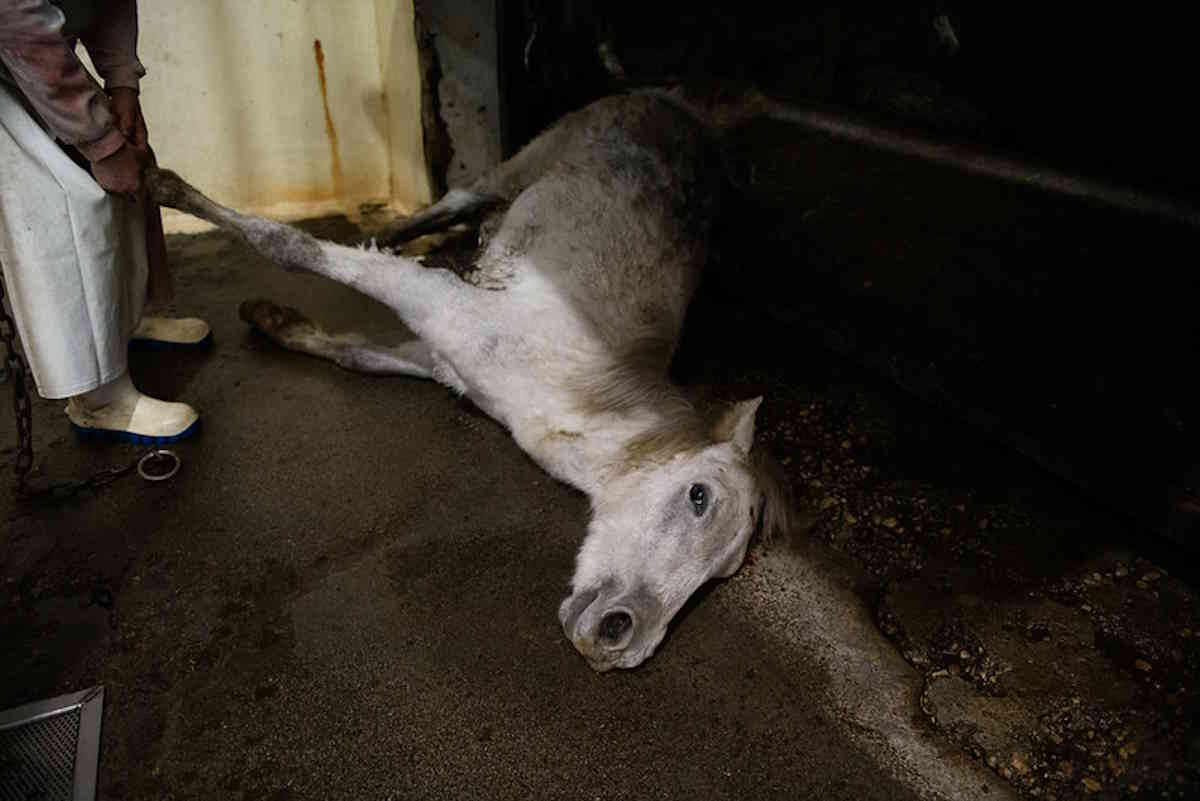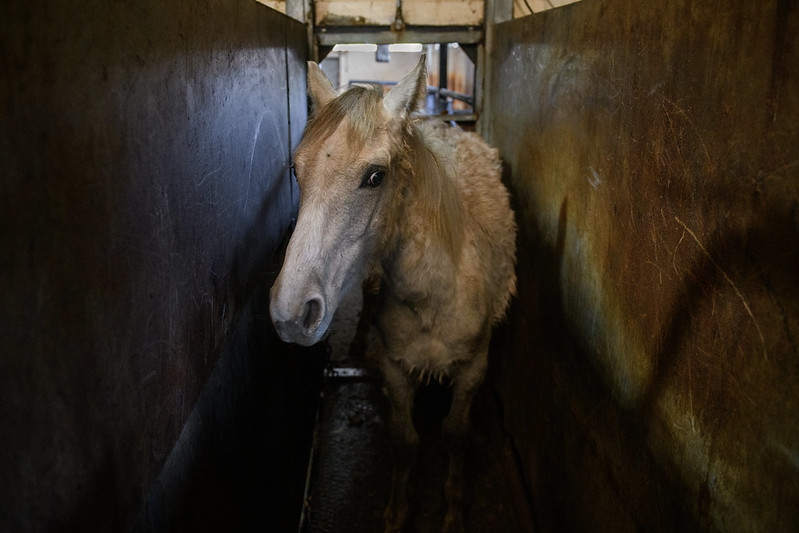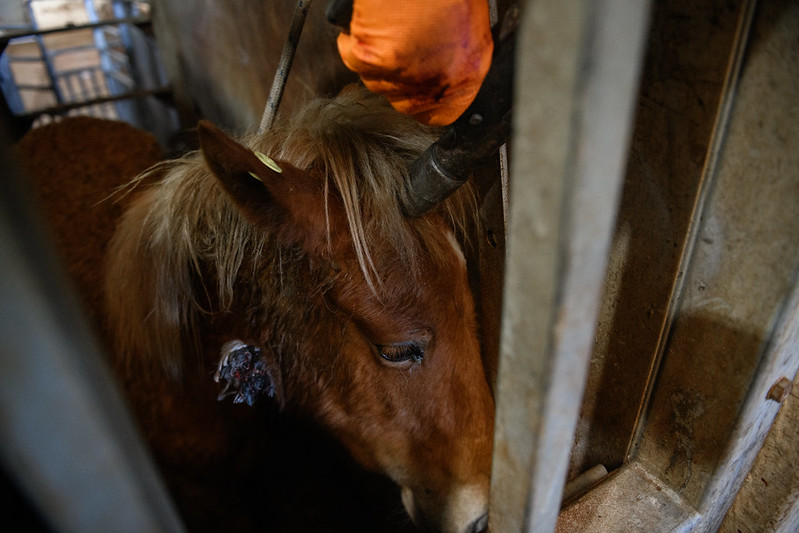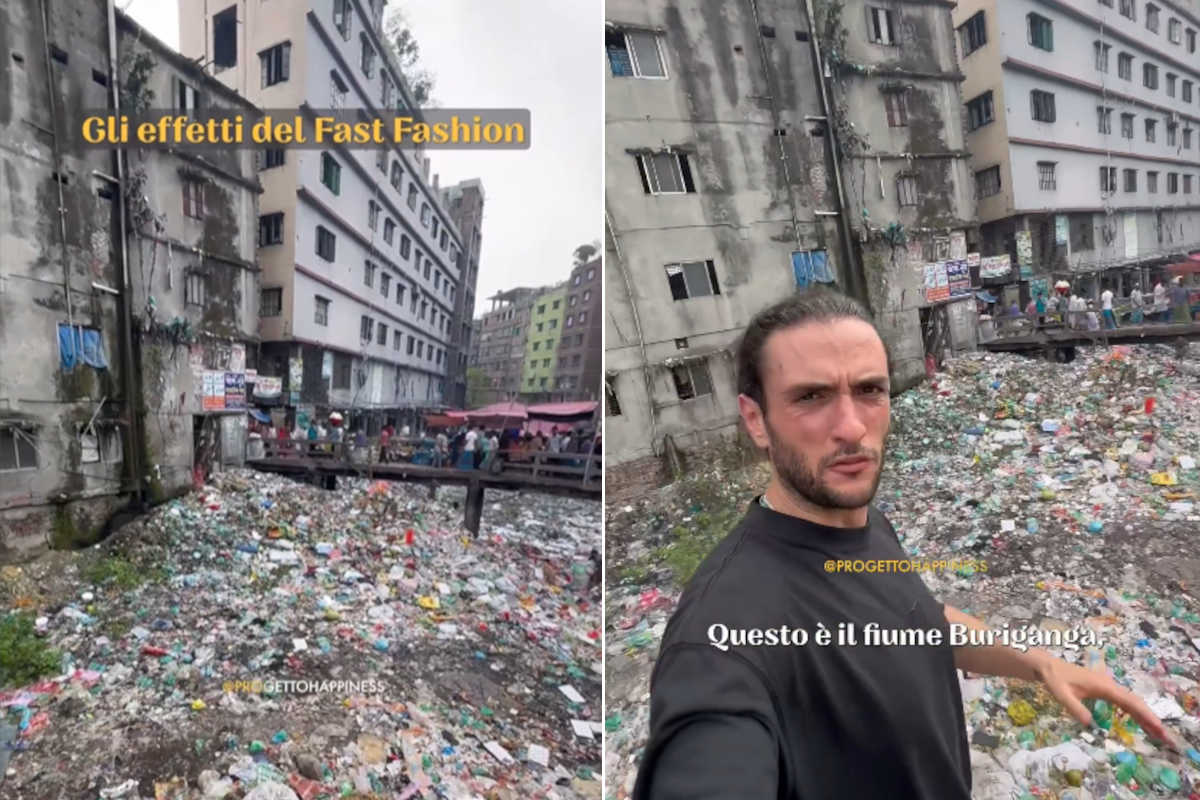Chilling investigation into a horse slaughterhouse in Spain, where equines suffer abuse before and during slaughter. Animal Equality, which carried out the investigation, is appealing to change the status of horses and recognize them as pets

@Animal Equality Italia
Beaten with sticks, forced to witness the massacre of their companions marked by tormented groans while they wait their turn to be killed. Lined up to enter the slaughter area, amidst rivers of blood, fear, and endless mistreatment.
These are the horrifying findings from Animal Equality during an investigation at a horse slaughterhouse in Spain. The association’s investigative team, with the support of photojournalist Aitor Garmendia, has gathered and released hair-raising images.
The investigation was conducted between November 2023 and May 2024 in Spain, which remains the largest producer of horse meat in the European Union.
Pure cruelty in the slaughterhouse
At the slaughterhouse in question, the killing of the animals is sheer cruelty, generating anguish and suffering in the horses in their final moments of life. To be slaughtered, the horses are forced to move forward under a barrage of beatings.

@Animal Equality Italia
An operator hits them with a stick, pushing them towards death, but death does not come immediately. Horses, incredibly intelligent animals, are forced to witness the torture inflicted on other horses. We can only guess what they must feel.
In desperation, one of them tries to escape. His survival instinct is not dulled, but his fate is already sealed. He will die, like all the others before him, and just like them, he will suffer.

@Animal Equality Italia
The incomplete stunning documented during the slaughter results in death by exsanguination. Many horses remain conscious. It is an inhumane system that brings horse meat to European tables.

@Animal Equality Italia
Problems in transportation
Transportation poses several issues. A 2011 study by the University of Cambridge found that 37% of horses examined in Europe were deemed unfit for transport under Council Regulation (EC) No 1/2005.
The health of the animals is particularly critical, with an average of six horses per load suffering acute injuries. These figures cannot be ignored.
Call for better regulation and awareness
“Our new investigation sheds light on a brutal and widespread slaughter system around the world that victimizes sentient beings considered by many, in Italy and beyond, to be companion animals. Yet, as we have reported, even in our own country, the control system is insufficient to ensure the protection of horses killed for food,” said Matteo Cupi, Vice President of Animal Equality Europe.
The collected material highlights all the abuses horses suffer before and during slaughter.
Source: Animal Equality

